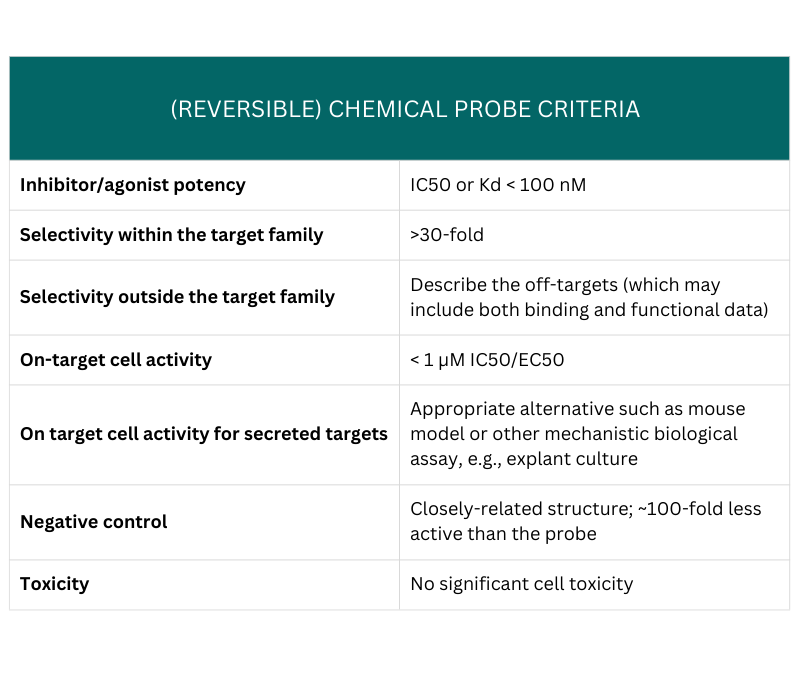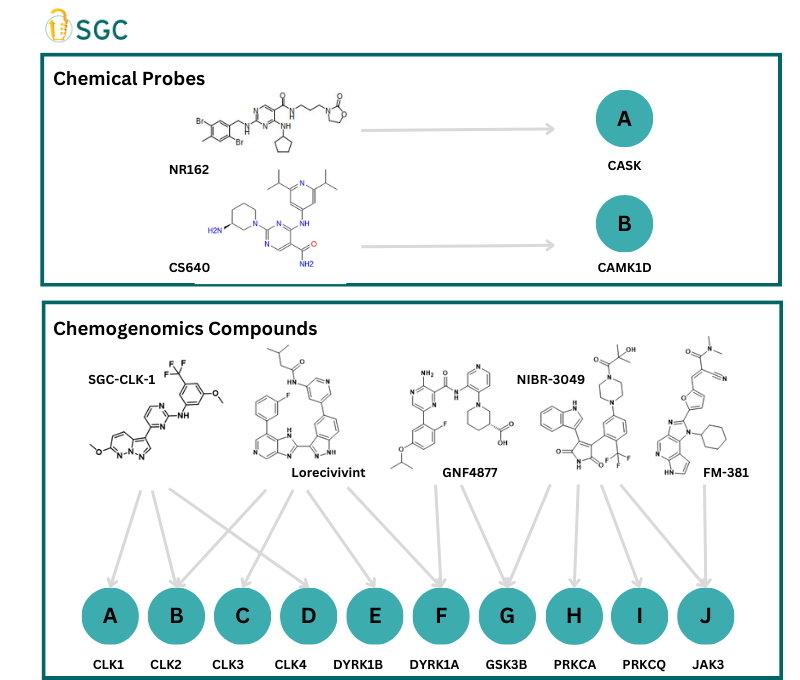The SGC has developed chemical tools to help scientists and drug discoverers interrogate new disease target hypotheses.
These chemical tools include chemical probes, chemical handles, and chemogenomic libraries.
When it comes to reproducible drug discovery, adherence to the guidelines of the chemical probes is crucial. SGC teamed up with Cayman Chemical to create a guide, packed with criteria, do’s & don'ts, and steps to pick the perfect chemical probe for your research.
Chemical Probes at SGC
CHEMICAL PROBES are cell-active, small-molecule ligands that selectively bind to specific biomolecular targets (usually proteins) and are important reagents for exploring biological mechanisms and validating targets for drug discovery. Most chemical probes modulate a protein’s function but can have various mechanisms of action including antagonism, agonism, degradation. To date, the SGC and collaborators have developed almost two hundred chemical probes for previously under-studied proteins.
CHEMICAL HANDLES are cell-active small-molecule ligands which bind selectively to its target. The most common chemical handles are for E3 ligases because they enable PROteolysis TArgeted Chimera (PROTAC) development. PROTACs are chimeras of E3 ligands (chemical handles), and ligands of a target-of-interest connected by suitable linkers. These chimeric molecules hijack the E3 ligase to ubiquitinate the target-of-interest leading to subsequent degradation by the proteosome.
All SGC chemical probes and handles have been evaluated by an internal and external expert committee with respect to meeting our defined criteria.
Note: Some chemical probes are reversible and non-reversible covalent. Non-reversible covalent probes require Kinact/Ki characterization, and preferably proteomics wide selectivity. The negative control should optimally include the reactive group but be inactive on the target. The control should also be profiled for proteomics wide selectivity.

Chemogenomic Sets at SGC
CHEMOGENOMIC LIBRARIES are sets of well-annotated compounds with a narrow selectivity profile. These libraries are assembled using rational selection and annotation of small molecules with high-throughput assays and systematic analysis for target identification. Due to the reduced stringency in terms of potency and selectivity compared to the chemical probes, these libraries can cover a large diversity of targets. By using a set of inhibitors with different profiles and from diverse chemical scaffolds, the identification of a specific target effect is enabled.
Read the criteria that chemogenomic sets of the SGC have been assembled.
Different scenarios covering a target space with a chemogenomic compound collection are depicted in the figure below.

Resources to read more about the chemical probes:
- The Chemical Probes Portal
- The promise and peril of chemical probes. Nat Chem Biol. 2015; 11, 536-541 doi: 10.1038/nchembio.1867.
- Expanding Chemical Probe Space: Quality Criteria for Covalent and Degrader Probes, J Med Chem., 2023 Jul 27; 66(14): 9297–9312. https://doi.org/10.1021/acs.jmedchem.3c00550.

